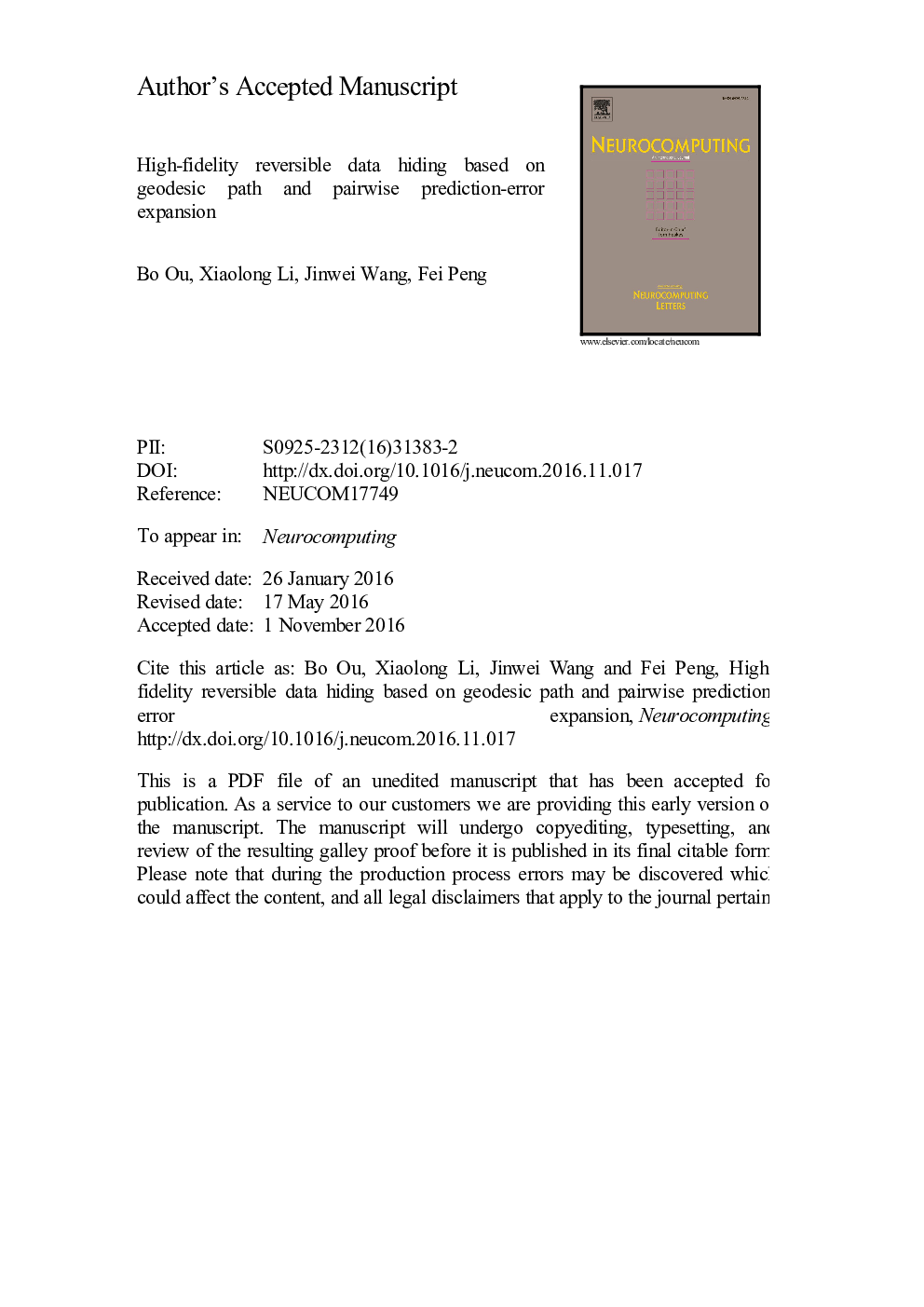| Article ID | Journal | Published Year | Pages | File Type |
|---|---|---|---|---|
| 4947963 | Neurocomputing | 2017 | 28 Pages |
Abstract
It is often important for reversible data hiding (RDH) to reduce the amount of image modifications for a given capacity. To this end, recently, a pairwise prediction-error expansion (pairwise PEE) is proposed to better exploit the image redundancy in the two-dimensional (2D) space. However, in conventional pairwise PEE, a drawback is that the pixel pair is generated by a fixed combination manner, which may limit the further improvement of embedding performance. Based on this consideration, we propose a new histogram generation strategy for the 2D RDH by using geodesic path. In contrast to the fixed manner, the pixels are adaptively combined into pairs with respect to the local similarity in terms of both spatial distance and intensity. As a result, the prediction-errors in a pair are more correlated to each other and the derived 2D PEH is more advisable for pairwise PEE. Experimental results show that, the proposed method can reduce the embedding distortion of conventional pairwise PEE, and yields a superior performance than some state-of-the-art methods.
Keywords
Related Topics
Physical Sciences and Engineering
Computer Science
Artificial Intelligence
Authors
Bo Ou, Xiaolong Li, Jinwei Wang, Fei Peng,
